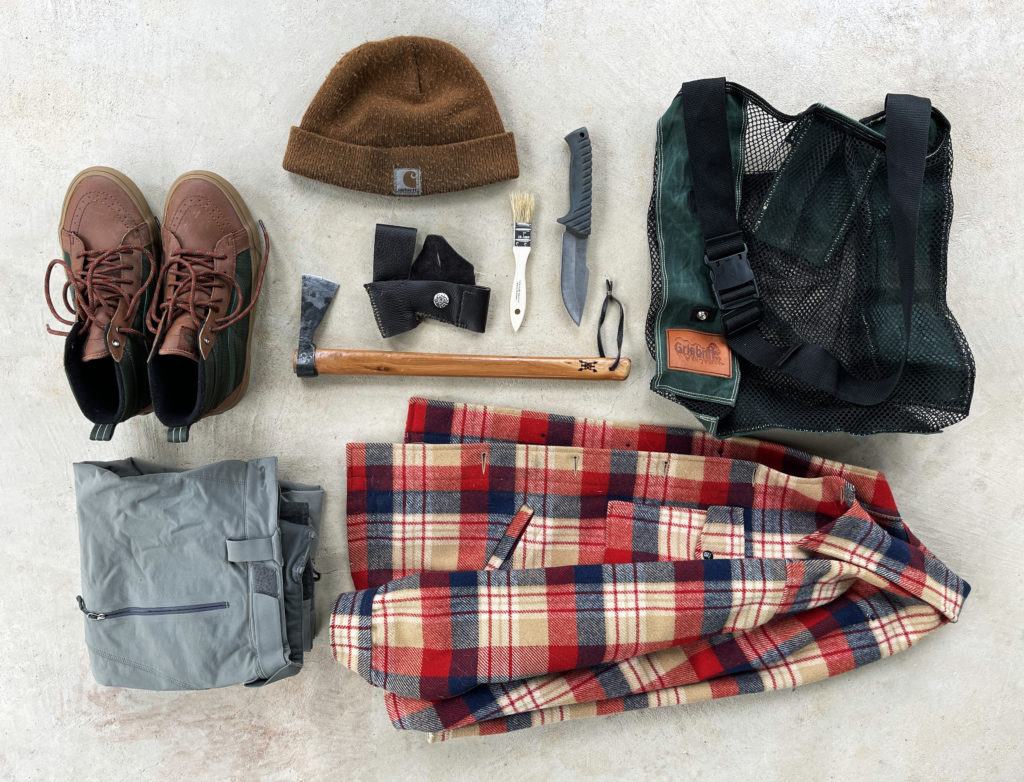Winter foraging offers tons of great foods that you can find yourself in the wild! Many people think that the short, dark days of winter mean an end to foraging, especially when the temperature drops and snow covers the land, but there are still some seasonal treats well worth bundling up and going in search of! In this series we will talk about some of the winter treasures you might be able to find in the cold woods that cover much of the northern part of the US, as well as touch on a few seasonal treats in other regions– but first let’s talk about a few of the extra considerations a winter forager needs to keep in mind, and the gear you will want to take with you to make your winter foraging less challenging and help you to have a successful hunt!
Winter Foraging is Cold - Always be Prepared!
When you go to the woods, dress in warm, wicking layers and be sure your footwear keeps your feet warm and dry, and wear a knit cap that you can pull over your ears and gloves or mittens with you even if you think you won’t need them. At a minimum, add a fire-starting kit with tinder, a whistle and a space blanket and maybe some hand warmers to an oversized pocket of your gear– remember that cold weather is hard on battery-operated devices and don’t plan to depend on a phone.
Keep in mind that fallen and windblown leaves or a snowfall can obscure trails and make the landscape appear quite different than in the warmer months, and take a printed map with topographical features with you if you don’t know an area well. Also keep in mind that winter hiking can wear you down quickly– especially trudging through snow– and that there are fewer hours of daylight, so the winter sun can seem to disappear quickly. Don’t overestimate your abilities or overextend yourself, and you will be far less likely to need your other survival tools.

Chaga Axe, comfy hiking shoes, foraging knife and brush, gathering bag, a nice warm hat, thick jacket and insulated hiking pants.
Sustainability and Proper Identification of Foraged Winter Crops
Every forager knows how important the proper identification of a plant is. A good rule of thumb is to be able to identify everything you gather by at least three unique features. Keep in mind that some of the features you might normally use to verify the identification of something during its growing season–like its foliage–can be missing or even appear entirely different in the winter. Many perennial and biennial plants overwinter by producing a basal rosette of hardy leaves low to the ground. Be certain that you can properly identify the plants you are foraging, and be aware of any look-alikes, including those that could have escaped cultivation. Never forage anything unless you are entirely confident in its identification.
It’s always important to forage responsibly and to leave a fair amount behind for wildlife to feed and to provide future generations of seed-bearing plants– in harsh winters those food stores can be even more important to the forest’s future than to assuring our survival as humans, so gather responsibly. Still, there are plentiful foods you can find to add important nutrients that could be otherwise missing from a supermarket diet.

What can I forage in the winter?
Winter foraging offers many great choices, even during the cold season. In the winter you can forage wild greens, wild mushrooms, and a variety of nuts and roots. The Foraged Winter Guide provides you with tons of great information on the winter foraged crops you can discover this time of year!